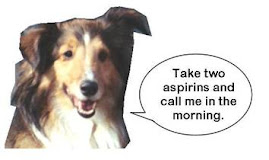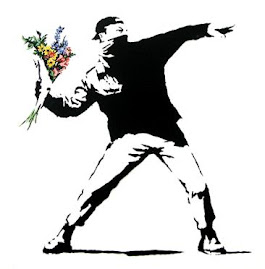“Schools could make a decisive contribution to religious tolerance by fostering an appreciation of poetry. We have a crying need for a school system in which the cultivation of a poetic mind ranks high. A sense for poetry is indispensable for the understanding of myths.” (72) That’s from Brother David Steindl-Rast, in his book Deeper than Words: Living the Apostles’ Creed. (I’ve told my wife that this book is a mystical commentary on the Apostles’ Creed.)
The idea that “mythology” equals “fairy tales” or even “falsehoods” has become entrenched in our minds. This is unfortunate. For many, the very concept of “mythological truth” seems like a contradiction in terms. In our society, we tend to prize scientific and literal terminology alone as ways of searching for, and expressing, the truth.
Still, who can deny that there’s an ocean of wisdom that simply cannot be communicated with cold facts and figures? (Try writing a love letter that way!) That is the power of poetry. That is the power of myth, which Richard Rohr has described as “something that is profoundly true at the deepest levels of life.”
The TV show Religion and Ethics Newsweekly recently did a piece on Brother David and gratitude. Click here to see it.
30 November 2010
19 November 2010
shrugging it off
In the last couple of years, there has been a resurgence of interest in Ayn Rand. When I was in my late teens, I had an intellectual “fling” with her myself! There was one day, as a freshman in college, when I was sitting with some friends in the cafeteria, and I asked one of them to read something from her book Atlas Shrugged. I referred to it, only half-jokingly, as “scripture.”
I learned plenty of things from Ayn Rand. One valuable lesson was about the dangers of ideology. I can remember times when I actually caught myself wondering, “Wait. How would Ayn Rand look at this?” I don’t believe that the poor woman (who died in 1982) ever realized how badly she was warped, while a teenager, by the Bolshevik Revolution in her native Russia. She, in tragicomic fashion, called herself an “Objectivist.” Those who consider themselves the objective standard demonstrate how sadly out of touch with reality they are.
Ayn Rand was a living example of narcissism. She proclaimed herself to be the greatest philosopher since Aristotle. In her nonfiction “philosophical” works, she often quotes characters from her fictional books to support her arguments. Eventually, I became disenchanted with her. Her criticism of those who support charitable causes as at least foolish, if not morally decadent, became more than I could stomach. Someone who can label charity (which means “love”) as essentially evil is a horribly twisted individual.
What is especially disturbing to me is that the resurgence of interest in her extends to people in positions of power. Among them is one of the so-called “young guns” in the Republican Party, Paul Ryan from Wisconsin. One of his goals, in true Randian fashion, is to “replace Medicare as we know it and most of Medicaid with a voucher program that would eventually reduce the value of the vouchers.” For someone like me, who needed state help in paying for two brain surgeries, that’s bad news.
I learned plenty of things from Ayn Rand. One valuable lesson was about the dangers of ideology. I can remember times when I actually caught myself wondering, “Wait. How would Ayn Rand look at this?” I don’t believe that the poor woman (who died in 1982) ever realized how badly she was warped, while a teenager, by the Bolshevik Revolution in her native Russia. She, in tragicomic fashion, called herself an “Objectivist.” Those who consider themselves the objective standard demonstrate how sadly out of touch with reality they are.
Ayn Rand was a living example of narcissism. She proclaimed herself to be the greatest philosopher since Aristotle. In her nonfiction “philosophical” works, she often quotes characters from her fictional books to support her arguments. Eventually, I became disenchanted with her. Her criticism of those who support charitable causes as at least foolish, if not morally decadent, became more than I could stomach. Someone who can label charity (which means “love”) as essentially evil is a horribly twisted individual.
What is especially disturbing to me is that the resurgence of interest in her extends to people in positions of power. Among them is one of the so-called “young guns” in the Republican Party, Paul Ryan from Wisconsin. One of his goals, in true Randian fashion, is to “replace Medicare as we know it and most of Medicaid with a voucher program that would eventually reduce the value of the vouchers.” For someone like me, who needed state help in paying for two brain surgeries, that’s bad news.
10 November 2010
BC and AD
This Sunday the 14th marks the fifteenth anniversary of the surgery needed to excise a malignant brain tumor that somehow had appeared beneath my skull. I say “somehow,” because I asked my neurologist what causes such things, and he responded, “Beats me!” (I’m paraphrasing.)
For a number of reasons, I’ve come to see that day as a watershed moment in my life—another conversion experience. My life prior to 14 November 1995 is BC, “before cancer.” Subsequent to that day is AD, “after diagnosis.” (It’s the best I could do to make it fit the letters!)
The upper photo, BC, is from my surprise birthday party in December 1993. Banu is smiling, knowing that her plan to get me out of the building succeeded. She conspired with our friend Ken, who asked me to go to the grocery store with him. The lower photo is AD, from January 1996. It’s possible that I was listening to WDRE, which was the alternative rock station in Philadelphia at the time.
For a number of reasons, I’ve come to see that day as a watershed moment in my life—another conversion experience. My life prior to 14 November 1995 is BC, “before cancer.” Subsequent to that day is AD, “after diagnosis.” (It’s the best I could do to make it fit the letters!)
The upper photo, BC, is from my surprise birthday party in December 1993. Banu is smiling, knowing that her plan to get me out of the building succeeded. She conspired with our friend Ken, who asked me to go to the grocery store with him. The lower photo is AD, from January 1996. It’s possible that I was listening to WDRE, which was the alternative rock station in Philadelphia at the time.
Subscribe to:
Posts (Atom)











